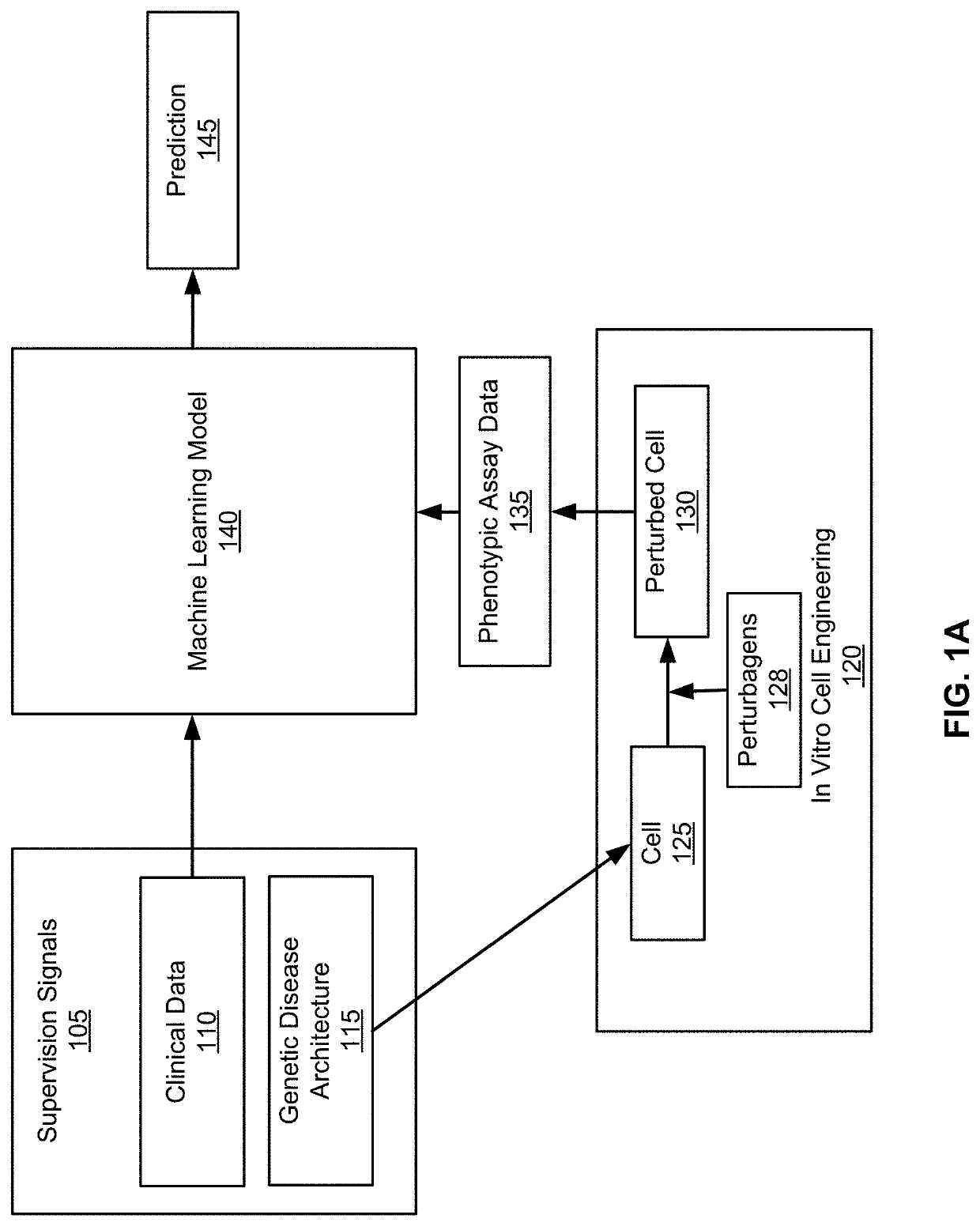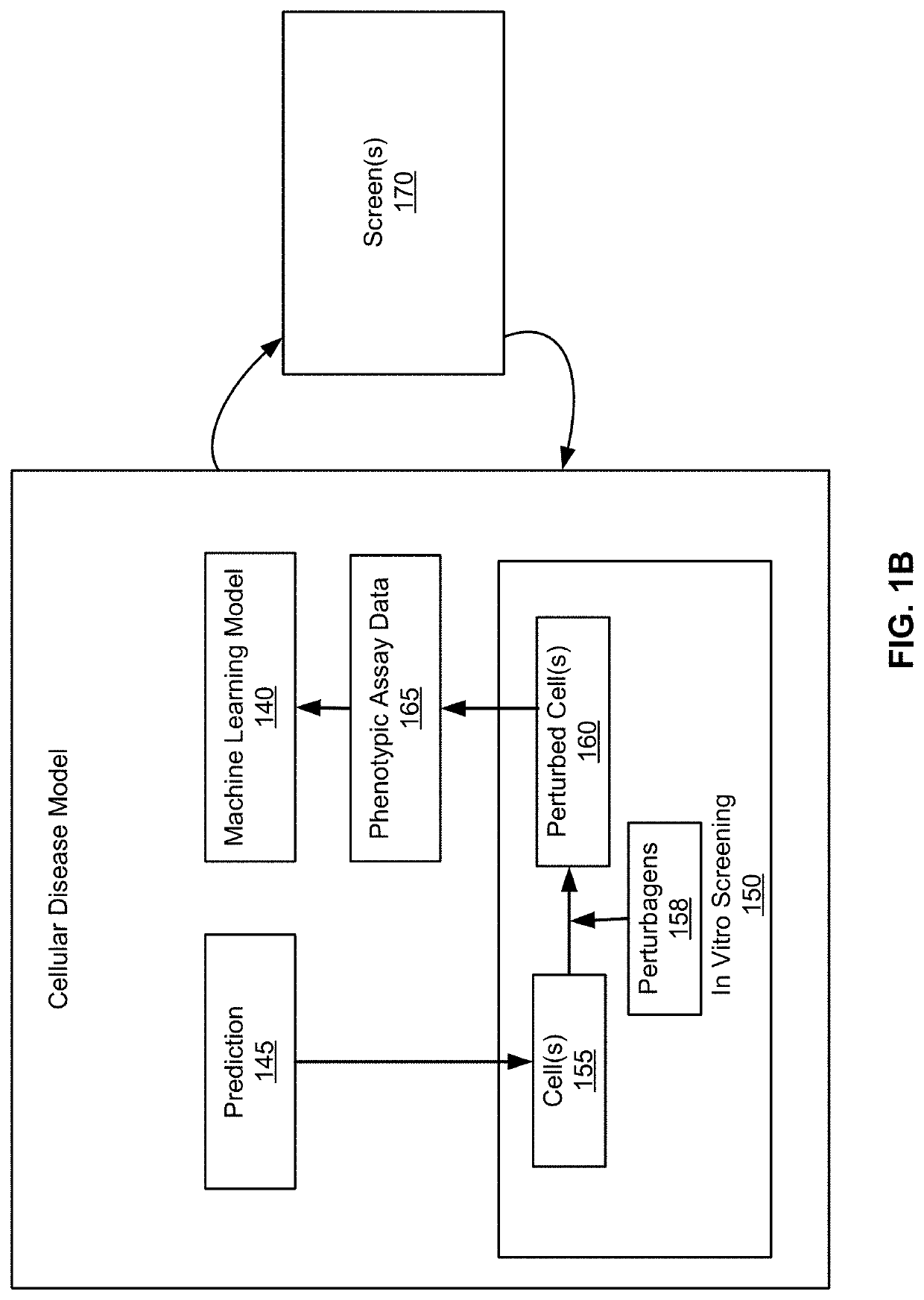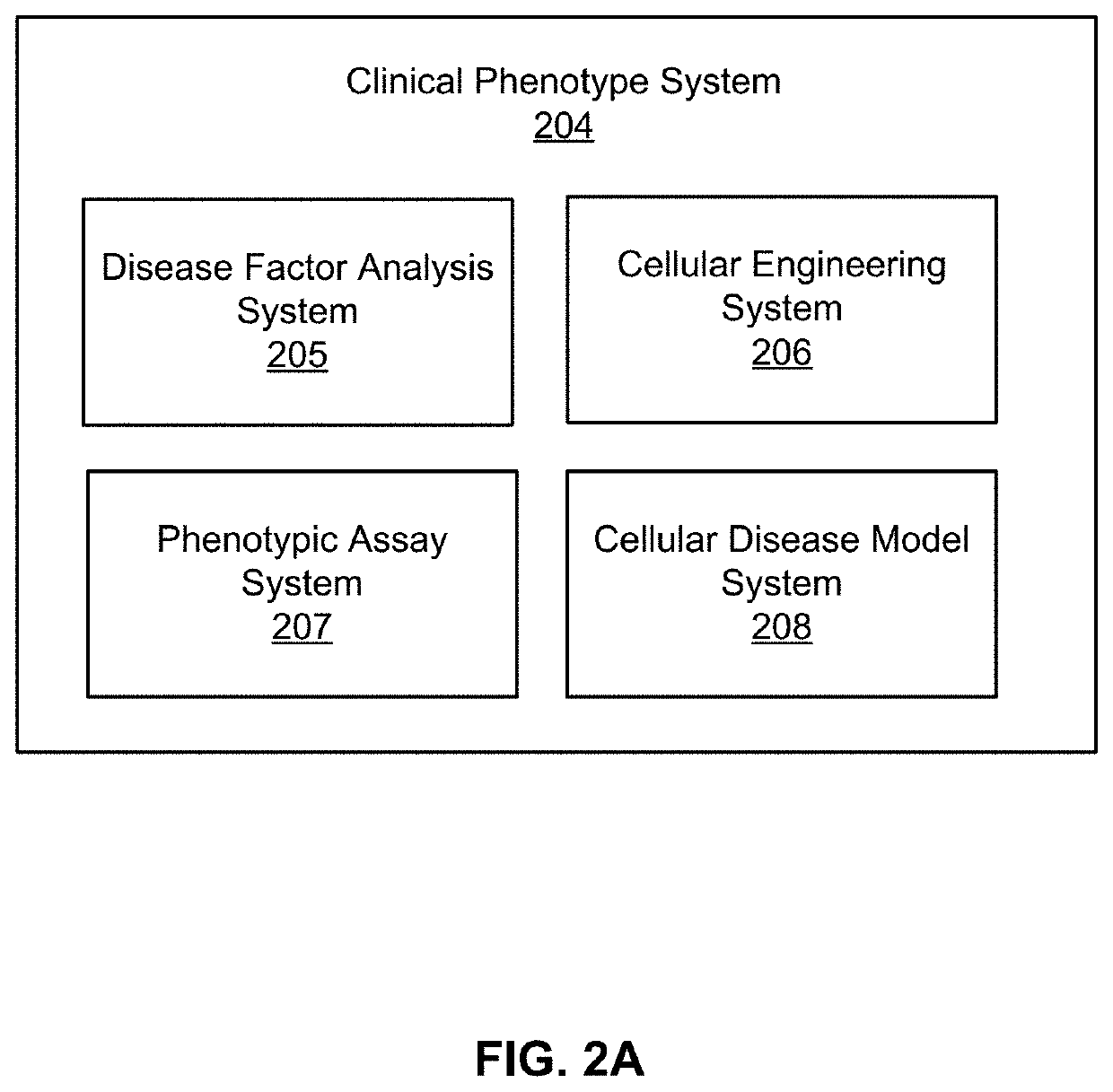Predicting disease outcomes using machine learned models
- Summary
- Abstract
- Description
- Claims
- Application Information
AI Technical Summary
Benefits of technology
Problems solved by technology
Method used
Image
Examples
example 1
g Cellular Disease Models
Example 1A: Human Data Analysis to Determine Genetic Disease Architecture
[0488]The goal during the human data analysis phase is to combine data from human genetic cohorts, from the literature, and from general-purpose (public or proprietary) cellular or tissue-level genomic data to unravel the set of factors—genetic, cellular, and environmental—that give rise to a given disease. This understanding of the disease will be used in subsequent phases to construct a cellular disease model.
[0489]Step 1: Construct a Clinical Description of the disease by identifying or constructing one or more relevant Clinical Phenotypes, such as:[0490]a) Using ascertained phenotypes such as disease state or disease progression[0491]b) Using standard approaches for summarizing or processing measured endophenotypes (e.g., HbA1c level, brain volume)[0492]c) Using supervised, semi-supervised, or unsupervised machine learning on measured endophenotypes to define new, ML-generated pheno...
example 1b
Training Data
[0521]To generate training data, a decision is first made on the target cell type, set of cell types in a co-culture, or organoid type to be generated. The outcome of this phase is a set of cellular avatars, each of which is characterized by the genetic and environmental perturbations that were performed on it, and a set of phenotypic assay data (as well as metadata capturing the entire range of conditions measured during the experiment). The phenotypic characterization of a cellular avatar can comprise aggregate measurements over a set of identically treated cells, or measurements taken over a single cell.
[0522]Step 1: Creation of iPSC cohort to align with genetic architecture of the disease in a target cell type that is predictive of the disease. In some cases, this will be the cell type in which the disease is active, but in other cases it is a proxy cell type that is easier to work with. Within the cells, the presence of causal genetic factors are established. This ...
example 1c
a Model
[0548]The model M can be evaluated by comparing the predictions of M for clinical phenotypes to the actual measured clinical phenotypes e.g., for an independent test cohort not used for training M. Specifically, assuming a separate cohort of (xi, yi) pairs, where xi is the input to the model M and yi is the actual measured clinical phenotypes, compute M on the xi vectors and compare the prediction to the measured yi. In this case, xi has the form (g{ai},pert{ai}, cell{ai}), where g{ai} represents the genetics of the ai, pert{ai} represents perturbations made on ai, and cell{ai} represents the phenotypic assay data captured from ai. Additionally, define intervene (xi, v) to be the vector (g{ai}, pert{ai,v}, cell{ai,v} where (pert{ai,v}) is a vector that includes all the perturbations made on ai plus the additional intervention v, and cellg{ai,v} is the phenotypic assay data measured following the intervention with v. The goal is to use the model M, applied to intervene(xi, v),...
PUM
 Login to View More
Login to View More Abstract
Description
Claims
Application Information
 Login to View More
Login to View More - R&D
- Intellectual Property
- Life Sciences
- Materials
- Tech Scout
- Unparalleled Data Quality
- Higher Quality Content
- 60% Fewer Hallucinations
Browse by: Latest US Patents, China's latest patents, Technical Efficacy Thesaurus, Application Domain, Technology Topic, Popular Technical Reports.
© 2025 PatSnap. All rights reserved.Legal|Privacy policy|Modern Slavery Act Transparency Statement|Sitemap|About US| Contact US: help@patsnap.com



